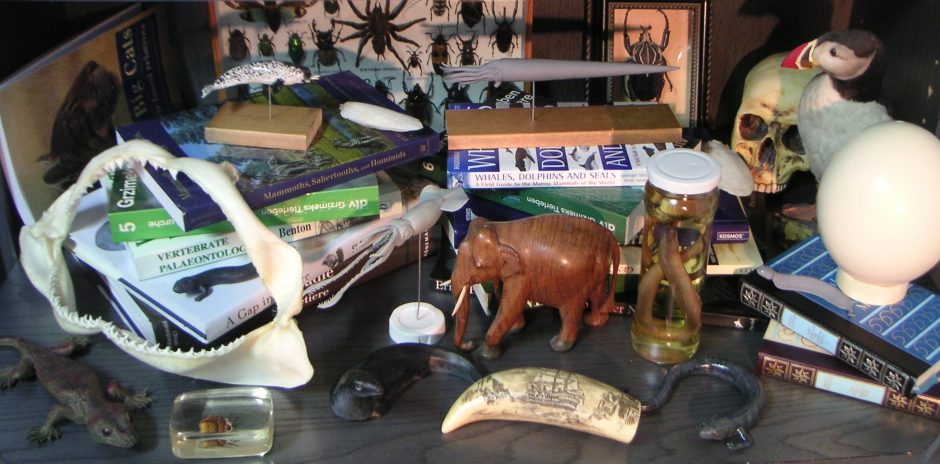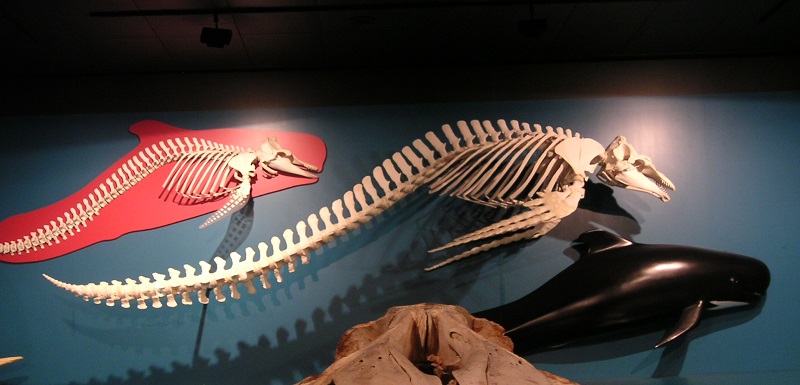Based on the recent discovery of an alleged „monster“ on a British beach, I decided to post a photo of a long-finned pilot whale´s skeleton from the zoological museum Hamburg. First of all, because that´s exactly what this purported monster really was, a highly decomposed and already partially burned skeleton of a long-finned pilot whale (Globicephala melaena). It is fully beyond me why so many people somehow forget that a lot of animals have bones at the inside, and if the overlaying soft tissue decomposes, mummifies or gets eaten away by scavengers those „bones“ can become visible and the whole thing looks different from its life-appearance.
Decomposed whale carcasses have already fooled countless people, especially when the bare bones of the caudal vertebrae were visible, what appeared to many like a crocodile-like tail. Furthermore the head and skull shape of many ododontocetes look very different, and even quite bulbous-headed species like belugas, orcas or pilot whales easily appear reptilian to people not familiar with their cranial anatomy. Even more so if the lips and the cheek tissue are already gone, and a surprisingly number of surprisingly big teeth is suddenly visible. But that´s not the only reason why I post this photo of a long-finned pilot whale´s skeleton.
It´s also because this skeleton shows well just how freaky Globicephala melaena really is, especially when compared with its close relative, the short-finned pilot whale Globicephala macrorhynchus (visible on the left).
G. macrorhynchus has a quite conservative body shape, which doesn´t differ that much from most other Delphinidae. But G. melaena has not only an extremely elongated body which looks almost a bit like something on the way to evolve into a Basilosaurus, it has also this enormously elongated pectoral fins with nearly wing-like finger bones.
If we would know it only from its fossils, it would probably be counted as a real weirdo, in line with Basilosaurus, Odobenocetops or Eurhinodelphis. However, it´s not, perhaps just because it´s a too familiar whale, which has long been known to many European coastal nations. Sadly we easily tend to overlook the unusual and special in animals which are apparantly too familiar or too normal.


What always strikes me is how far apart an animals skeleton and its actual complete body shape can be.
I wonder how far out common ideas are about how e. g. dinosaurs looked like.
Love your blog!
After all it is quite likely that at least some dinosaurs looked quite different in life than their usual reconstructions. It´s possible to reconstruct musculature to some degree based on the bones for example, but it´s more or less impossible to know for example the shape and amount of fat and connective tissue. Marine mammals are of course an extreme, because they have a whole lof of body fat and connective tissue which makes them more streamlined and insulates them against the colder water.